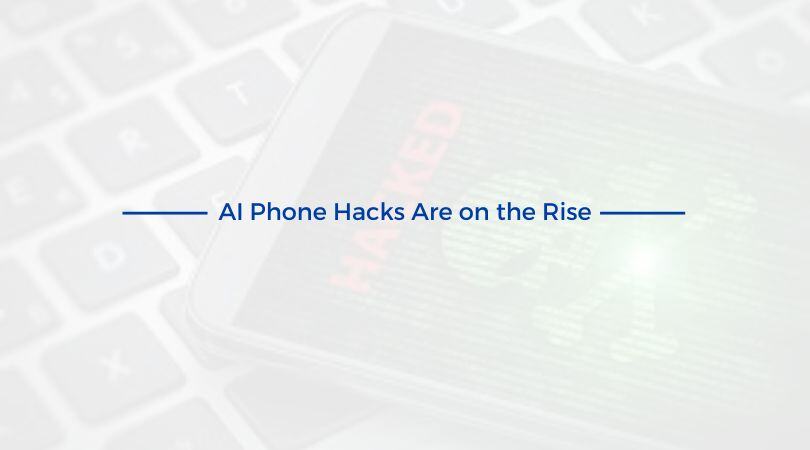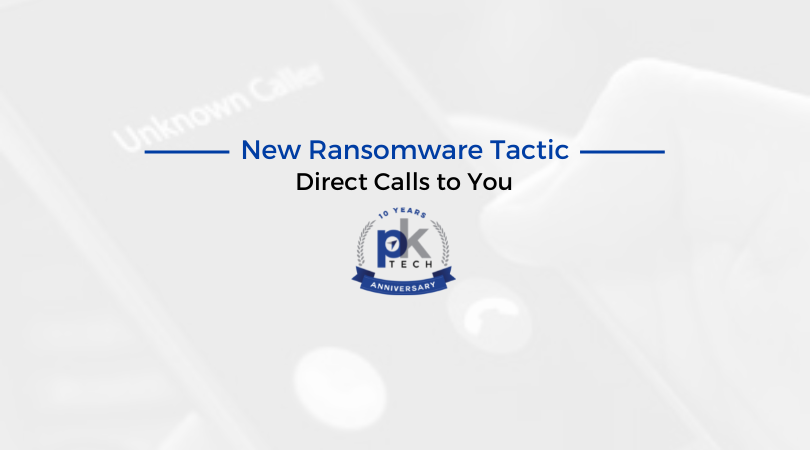Latest Ransomware Scheme: Cyber Criminals Are Mailing Out USB Drives That Install Malware
Cybercriminals continue to innovate at an alarming rate. The latest scheme is to mail out USB drives that install malware onto your device when they...

You now not only have to worry that email attachments are real. Now, there is a very real fear of Artificial Intelligence (AI) impersonating voices on phone calls.
The trend has been rising, culminating in an official warning from the Cybersecurity and Infrastructure Security Agency (CISA). Criminals are impersonating employees in phone calls in an attempt to deceive potential victims into transferring money.
As AI continues to develop and evolve, like all forms of technological advancement, there comes both gain and risk.
With a proactive approach to cybersecurity, organizations should avoid fear and instead embrace education on the topic. Let’s dive into everything you need to know about AI phone hacks and how to prevent them in your organization.
Hackers can use artificial intelligence (AI) to carry out targeted attacks on a large scale, including on iPhones and Androids. AI can automate attacks, making them faster, more scalable, and more sophisticated. Here are some ways hackers can use AI to attack iPhones:
The rise of the popular phone voice hack falls under the umbrella of long-used impersonation hacks. In short, cybercriminals pretend to be someone they are not to receive data or money illicitly.
Last year, impersonation scams caused $1.1 billion in losses to organizations (reference). Read that number again. All that to say, the rise of impersonation hacks and AI phone hacks, specifically, is worth paying attention to.
In addition to the CISA warning, the U.S. Federal Trade Commission (FTC) issued a warning in March about scammers pretending to be FTC employees. The scam has resulted in thousands of dollars in fraud.
The average impersonation scheme cost an organization $3,000 in 2019 and $7,000 in 2024, a rising cost that is not a welcome change. In 2023, total losses from impersonation schemes were three times that of losses in 2020.
Like all types of scams, there are strategies to avoid falling victim. Informed individuals are less likely to be successfully targeted.
As with most aspects of our world, AI has touched, it is unknown the true extent to which AI will change the world of cybersecurity. Like most things in the technological space, businesses are wise to understand and embrace the changes that AI brings to fortify their employees, data, and physical spaces. AI is here to stay – businesses can embrace it or deny it exists – the latter is a risky stance (in our humble opinions).
Here’s why it matters: losses due to online crime are ever on the rise, and 2023 was no exception. A 22% increase from 2022 to 2023 in losses to online crime was reported in the FBI’s 2023 Internet Crime Report. When $12.5 billion in losses is on the table, businesses are wise to pay attention and make a proactive plan to protect themselves as AI continues to have a heavy influence on cybersecurity.
Employee education and a robust cybersecurity plan will help protect your business. Ready to take the first steps? PK Tech is here to help. Schedule a free 15-minute consultation with a member of our team today.

Cybercriminals continue to innovate at an alarming rate. The latest scheme is to mail out USB drives that install malware onto your device when they...

Do you feel you get many more spam calls than you used to? You’re not alone. Americans receive over 50 billion robocalls yearly, finally putting this...

As many cyber actors enter the cybersecurity landscape, ransomware hackers are constantly on the prowl for new ways to breach networks and gain...